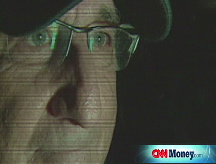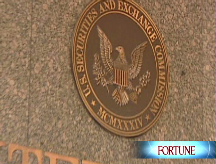Charities: the foundation of Madoff's scheme?
By targeting charities, the alleged swindler could avoid the threat of sudden or unexpected withdrawals, argues an expert on Ponzi schemes.
NEW YORK (Fortune) -- One of the most vexing questions in the Bernard Madoff scandal is, "How did he get away with it for so long?" A disturbing answer might be found in an unexpected place - the predictable nature of some of his hardest-hit investors.
Reports suggest that Madoff may have been a swindler for decades, using the Ponzi-scheme method of paying old investors with money from new ones. Most such frauds collapse within a year or two, as withdrawals exceed deposits, or regulators get wise. Eponymous schemer Charles Ponzi was in business for only eight months in 1920 before somnolent regulators were spurred to action by skeptical journalists.
Regulatory failures surely played a role in Madoff's longevity - the chairman of the Securities and Exchange Commission has apologized and promised an investigation into how examiners missed years of flaming arrows pointing toward Madoff.
But that doesn't explain the structural "success" that Madoff enjoyed for so long. One possible answer is that years ago Madoff solved the two interlocking puzzles that usually prevent Ponzi schemes from becoming perpetual money machines: sustaining growth while maintaining stability.
The growth half of the equation is the easier part, and plenty has been written about how Madoff continually enticed new investors through a veneer of exclusivity and respectability, and the absence of volatility. The second half is trickier. When running a Ponzi scheme, how does one avoid enormous, unexpected withdrawals - runs on the bank, so to speak - that would pull back the curtain and reveal a little man blowing smoke?
One way would be to attract a core of investors who could be counted on to never withdraw more than a small percentage of principal each year. In Madoff's case, he may have accomplished that feat by offering his prized services to charitable foundations.
No full accounting yet exists of how much foundations lost by investing with Madoff, but it might be in the billions. Earlier this month, the Picower Foundation of Palm Beach said it was shutting down as a result of Madoff losses. Picower's 2007 tax return valued its portfolio at $955 million. The Carl and Ruth Shapiro Foundation of Boston says it lost $145 million. So the billion-dollar mark may already have been breached, without counting millions of dollars reported lost by Elie Wiesel's Foundation ror Humanity, Steven Spielberg's Wunderkinder Foundation and many others.
Some observers have theorized that Madoff's apparent soft spot for foundations was a ploy to instill confidence in private investors. ("Look at all the good work he does for such fine groups!") That might be true, but it overlooks a simple fact that makes foundations ripe targets for a Ponzi schemer: the 5% payout rule.
Federal law requires foundations to spend 5% of their funds each year on good works and administrative costs. Some foundations exceed that requirement in times of need, such as post-Hurricane Katrina, and some are designed to spend themselves out of existence over a set period of time. But most foundations closely adhere to the 5% rule. By doing so, they offer their creators the prospect of philanthropic immortality. As long as a foundation's principal earns 5% a year - not always possible in a given year, but a reasonable goal over time - a foundation endures, and so does its sponsor's vision.
By claiming clockwork earnings of roughly 12% a year, Madoff made himself enormously alluring to foundations. They weren't chasing big short-term gains, just a safe and steady haven to cover the 5% payout and grow the base. By satisfying those desires, Madoff attracted gold-plated customers who would enhance his reputation and almost never come running with urgent financial demands. (Nonprofit organizations and endowments aren't governed by the 5% rule, but many operate under a similar slow-and-steady philosophy, and they appear to have been equally embraced by Madoff. Among them was Yeshiva University, which reportedly lost $110 million of its endowment.)
For every $1 billion in foundation investment, Madoff was effectively on the hook for about $50 million in withdrawals a year. If he wasn't making real investments, at that rate the principal would last only 20 years. But by continuing to add new (if more volatile) investments, a Ponzi scheme built on that approach could thrive long into the future. In Madoff's case, it appears that only the autumn market meltdown and extraordinary demands for cash by other investors in early December overwhelmed his well-oiled system.
Madoff hasn't commented publicly on his strategy, but if indeed he viewed charitable foundations as, well, the foundation of his alleged scheme, then the revulsion he has already generated is nothing compared with what will soon come due.
Mitchell Zuckoff is a professor of journalism at Boston University and the author of "Ponzi's Scheme: The True Story of a Financial Legend." ![]()
-
 The retail giant tops the Fortune 500 for the second year in a row. Who else made the list? More
The retail giant tops the Fortune 500 for the second year in a row. Who else made the list? More -
 This group of companies is all about social networking to connect with their customers. More
This group of companies is all about social networking to connect with their customers. More -
 The fight over the cholesterol medication is keeping a generic version from hitting the market. More
The fight over the cholesterol medication is keeping a generic version from hitting the market. More -
 Bin Laden may be dead, but the terrorist group he led doesn't need his money. More
Bin Laden may be dead, but the terrorist group he led doesn't need his money. More -
 U.S. real estate might be a mess, but in other parts of the world, home prices are jumping. More
U.S. real estate might be a mess, but in other parts of the world, home prices are jumping. More -
 Libya's output is a fraction of global production, but it's crucial to the nation's economy. More
Libya's output is a fraction of global production, but it's crucial to the nation's economy. More -
 Once rates start to rise, things could get ugly fast for our neighbors to the north. More
Once rates start to rise, things could get ugly fast for our neighbors to the north. More










